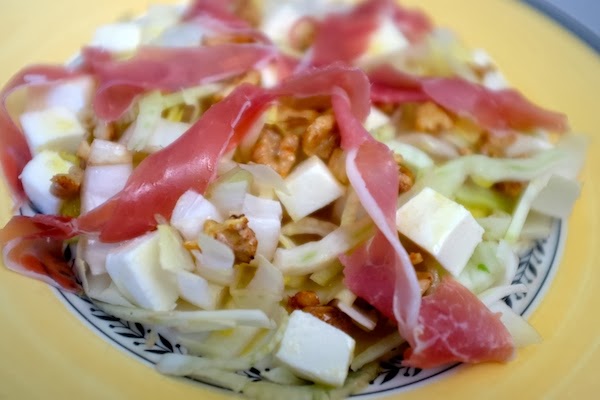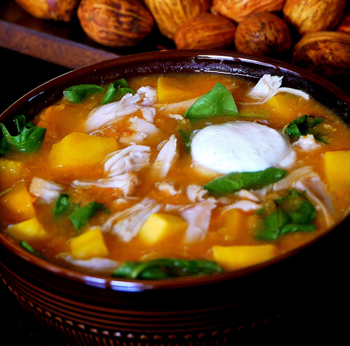 My one favorite thing about the winter season is citrus fruit. When I have a good lemon or orange in hand, I almost forget about the mountains of snow and the blistery weather. I always seek out unusual citrus fruits, from Meyer lemons to blood oranges. But the one citrus fruit I use most is the standard lemon. The ones available in the supermarket are typically the Eureka variety. I use those juicy yellow orbs in practically every recipe. Salad dressings, baked goods, and stews all benefit from a little lemon, be it the juice or zest. The aroma and flavor of lemons are what make them so special and revered in many cuisines.
My one favorite thing about the winter season is citrus fruit. When I have a good lemon or orange in hand, I almost forget about the mountains of snow and the blistery weather. I always seek out unusual citrus fruits, from Meyer lemons to blood oranges. But the one citrus fruit I use most is the standard lemon. The ones available in the supermarket are typically the Eureka variety. I use those juicy yellow orbs in practically every recipe. Salad dressings, baked goods, and stews all benefit from a little lemon, be it the juice or zest. The aroma and flavor of lemons are what make them so special and revered in many cuisines.
Luckily we can get lemons year-round in the supermarket, but there are also ways to preserve them. Many cultures preserve lemons when they are in season for later use during the rest of the year. North African cuisine, particularly Moroccan, and even Indian and Southeast Asian cuisines utilize preserved lemons in many savory recipes. They are added to the famous Moroccan tagines. They are also great in standard stews, braises, and roasts. Just as with the fresh citrus fruit, the possibilities are limitless with preserved lemons.
Winter
Winter
Carrot Cashew Soup with Cilantro Drizzle
 It always amazes me how a handful of ingredients can come together in such stunning ways. Take carrots and raw cashews. Who knew? Combining them with some chicken broth resulted in an extraordinarily different kind of soup. It is creamy and light as a cloud at the same time. Neither liquid nor broth, but more of a puree with texture.
It always amazes me how a handful of ingredients can come together in such stunning ways. Take carrots and raw cashews. Who knew? Combining them with some chicken broth resulted in an extraordinarily different kind of soup. It is creamy and light as a cloud at the same time. Neither liquid nor broth, but more of a puree with texture.
First I cooked the carrots in chicken broth until they were tender, then I dropped them into a blender with cups of raw cashews, salt, and a dash of ground cloves.
I loved the taste, but wanted to layer on another flavor. At first I thought about topping the soup with a swirl of port glaze. I've always loved carrots and port together. Yet, when I spied a bunch of cilantro sitting on the kitchen counter, I opted for the green. With a quick pulse or two in the food processor with some deep green oil, salt and bit of garlic, I had my drizzle.
This soup is sublime. Healthy. Simple. And totally satisfying.
Holiday Oysters
 Everyone has an event that ignites the holiday spirit. Maybe it’s a family outing to cut down a tree or baking spicy, fragrant cookies but for me it’s that annual telephone call a week in advance and the magical ride to Glidden Point Oyster Farm in Edgecomb, Maine.
Everyone has an event that ignites the holiday spirit. Maybe it’s a family outing to cut down a tree or baking spicy, fragrant cookies but for me it’s that annual telephone call a week in advance and the magical ride to Glidden Point Oyster Farm in Edgecomb, Maine.
The phone call and the ride is the start of the holiday season for me, it’s even better then listening to Handel’s Messiah. I order plenty to last from Christmas Eve through New Years Eve, and I serve them in copious quantities.
Barb Scully, the owner of the oyster farm, dives 40 foot deep into the ‘brisk’ water of the Damariscotta River in front of her business/home-that is her description. I should add that the brackish water is almost frozen by Christmas and she generally stops diving for oysters by the 25th, closing her operation down for a few months.
She is a skinny, short-haired woman with pasty white skin and a constant indentation circling her face from her diver’s wet suit. She has a rather abrupt manner to her, but boy, are her oysters the Rolls Royce of shellfish. When I get them they are barely hours old and she dives for the big ones, especially for me. I’ll eat little oysters if I have to but I prefer the older, jumbo ones - luncheon plate size.
Endive and Fennel Salad with Prosciutto

Endive and fennel just seem to have a natural affinity for one another. Both are crisp, but fennel has a chewier texture and a sweetness, while endive is lighter and juicier and has a slightly bitter edge. You could use them to make a simple side salad but this one has lots of goodies to make it a main dish. Use a Champagne vinaigrette or a Dijon mustard vinaigrette to dress it. Or even just lemon juice and extra virgin olive oil.
Sunday, Bloody (Orange) Sunday
 It rained here for the last three weekends. As a result, the Sunday farmers' market was nearly empty. (Southern Californians don't go out in the rain.) So, it's been just a few farmers, some die-hard vegetarians, and a handful of New England transplants.
It rained here for the last three weekends. As a result, the Sunday farmers' market was nearly empty. (Southern Californians don't go out in the rain.) So, it's been just a few farmers, some die-hard vegetarians, and a handful of New England transplants.
This all changed yesterday. It was the quintessential San Diego day - sunny, with a light breeze. You couldn't move at the farmers' market. People were clamoring for colorful rainbow carrots, luscious Meyer lemons, and tart pink grapefruit.
The biggest attraction was the exceptionally juicy, tangy blood oranges that beckoned market-goers with their ruby-colored flesh. One poor farmer handing out samples nearly got trampled on by a gaggle of Red Hats who were visiting. And there I was without my camera. Ugh.
So what's all the fuss about? Anthocyanin, the same chemical that makes blueberries blue and cranberries red, gives blood oranges their characteristic "bloody"color. It can range from bright ruby red to deep burgundy and has an exceptionally pleasing sweet-tart flavor unlike any other orange.
More Articles ...
Welcome to the new One for the Table ...
Our Home Page will be different each time you arrive.
We're sure you'll find something to pique your interest...


